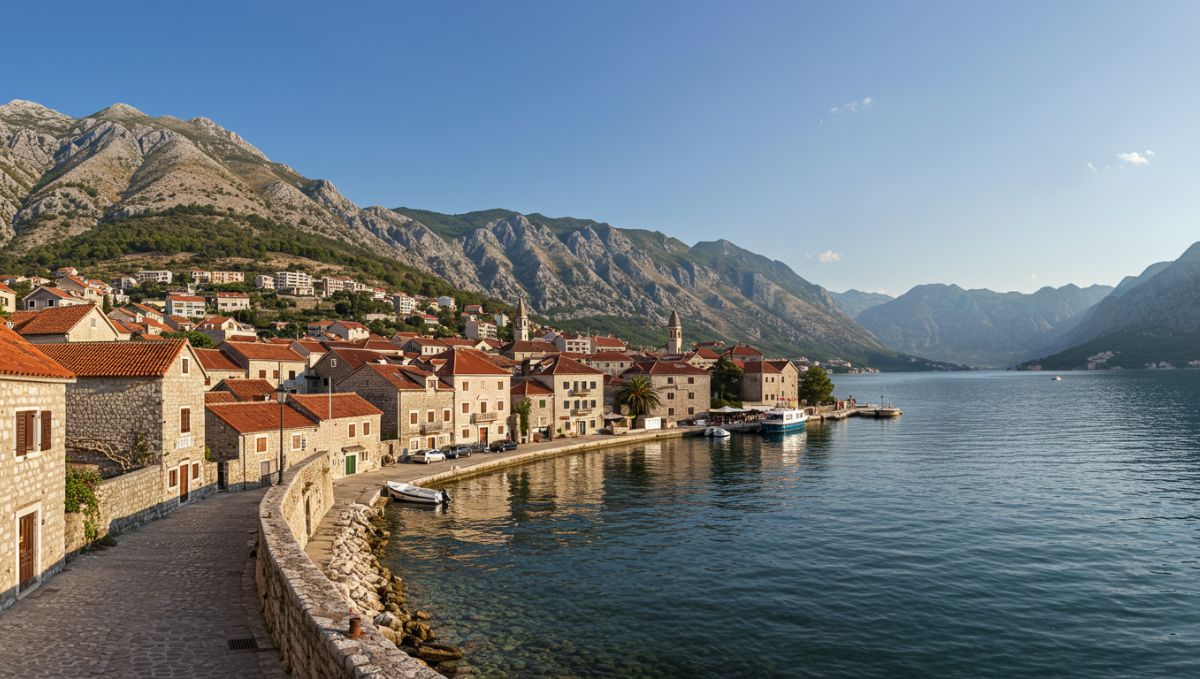Among the scenic treasures of the Balkans lies kotora melnkalne, a term that often sparks curiosity among travelers, historians, and culture enthusiasts. Referring to the historic coastal town of Kotor in Montenegro (Melnkalne in some transliterations), it represents one of the most beautiful and culturally rich destinations in Europe.
This article explores the heritage, natural beauty, and modern appeal of kotora melnkalne, making it clear why this place continues to attract global attention.
Where is Kotora Melnkalne?
Kotora melnkalne refers to the town of Kotor in Montenegro, located along the Adriatic coast. This UNESCO World Heritage Site is famous for its:
-
Bay of Kotor – often described as Europe’s southernmost fjord.
-
Historic Old Town – a preserved medieval settlement with Venetian influences.
-
Surrounding Mountains – offering breathtaking views of the Adriatic Sea.
Historical Significance of Kotora Melnkalne
The history of kotora melnkalne is layered and fascinating:
-
Ancient Foundations – Originally settled during Roman times.
-
Medieval Growth – Flourished as a trading and cultural hub in the Middle Ages.
-
Venetian Influence – Architectural traces of Venetian rule are still visible.
-
Cultural Fusion – A blend of Slavic, Ottoman, and Mediterranean influences makes Kotor unique.
This historical richness gives kotora melnkalne a timeless charm.
Architecture and Old Town Charm
One of the most captivating features of kotora melnkalne is its Old Town, filled with narrow stone streets, charming squares, and ancient churches. Highlights include:
-
St. Tryphon Cathedral – Built in the 12th century, symbolizing Kotor’s deep Christian roots.
-
City Walls – Stretching over 4 km, offering panoramic views of the bay.
-
Clock Tower – A central landmark dating back to the 17th century.
The Old Town is not just a tourist attraction—it’s a living piece of history.
Natural Beauty of Kotora Melnkalne
The Bay of Kotor
This deep bay is surrounded by towering mountains, often compared to Norwegian fjords. It’s a paradise for sailing, photography, and relaxation.
Mountain Trails
Hiking up the Ladder of Kotor rewards travelers with unmatched views of the Adriatic coast.
Beaches and Coastline
While primarily known for history, kotora melnkalne also offers beaches where travelers can enjoy the Mediterranean sun.
Culture and Traditions
Kotor is more than just stunning architecture—it is a cultural hub with unique traditions:
-
Carnival of Kotor – Celebrated with parades, masks, and music.
-
Music Festivals – Jazz, classical, and modern performances attract international audiences.
-
Cuisine – Local dishes combine seafood, Mediterranean flavors, and Balkan spices.
Visitors exploring kotora get a full cultural experience, blending history with modern vibrancy.
Why Tourists Love Kotora Melnkalne
-
UNESCO World Heritage Status – Recognition of its cultural and historical value.
-
Affordable Destination – Compared to Western Europe, it offers value for money.
-
Cruise Port – Popular stop for Adriatic and Mediterranean cruises.
-
Romantic Atmosphere – Ideal for couples seeking a historic yet lively getaway.
Activities in Kotora Melnkalne
-
Walking Tours – Explore the Old Town with a guide to uncover hidden stories.
-
Boat Trips – Sail around the bay to nearby Perast and Our Lady of the Rocks.
-
Hiking – Challenge yourself with trails up Mount Lovćen.
-
Cultural Visits – Museums, galleries, and religious landmarks.
-
Local Dining – Taste Montenegrin wine, seafood, and traditional dishes.
Kotora in Modern Times
While rooted in history, kotora is also a modern tourism hub:
-
Boutique hotels inside medieval buildings.
-
Cafes and restaurants offering international and local cuisine.
-
Nightlife with bars and music venues.
-
Increasing popularity as a filming and photography location.
The Economic Impact of Tourism
Tourism in kotora plays a vital role in Montenegro’s economy. Its growth has:
-
Boosted local businesses.
-
Encouraged restoration of historic landmarks.
-
Created opportunities for sustainable tourism initiatives.
Tips for Visiting Kotora Melnkalne
-
Best Time to Visit – Spring and autumn for pleasant weather and fewer crowds.
-
Currency – Euro is used across Montenegro.
-
Language – Montenegrin, though English is widely spoken in tourist areas.
-
Transport – Easily accessible by car, bus, or cruise ship.
Future of Kotora Melnkalne
Looking ahead, kotora melnkalne is likely to see:
-
Increased Tourism – As more travelers discover its beauty.
-
Sustainability Projects – Protecting its heritage while welcoming visitors.
-
Digital Promotion – Rising online interest in Kotor as a travel keyword.
Its mix of heritage and modern tourism ensures long-lasting global appeal.
Why Kotora Melnkalne Stands Out
Unlike many European destinations, kotora blends natural landscapes, medieval history, and vibrant culture all in one place. It is not just a town to visit, but an experience that combines past and present seamlessly.
Conclusion
Kotora melnkalne represents one of Europe’s most enchanting coastal treasures. With its stunning bay, medieval Old Town, rich cultural traditions, and growing role in modern tourism, it stands as a must-visit destination in Montenegro.
Whether you’re a history lover, nature explorer, or cultural traveler, kotora offers an unforgettable journey. Its charm lies not just in its beauty, but in its ability to connect people to centuries of heritage while welcoming them into a vibrant, living community.

